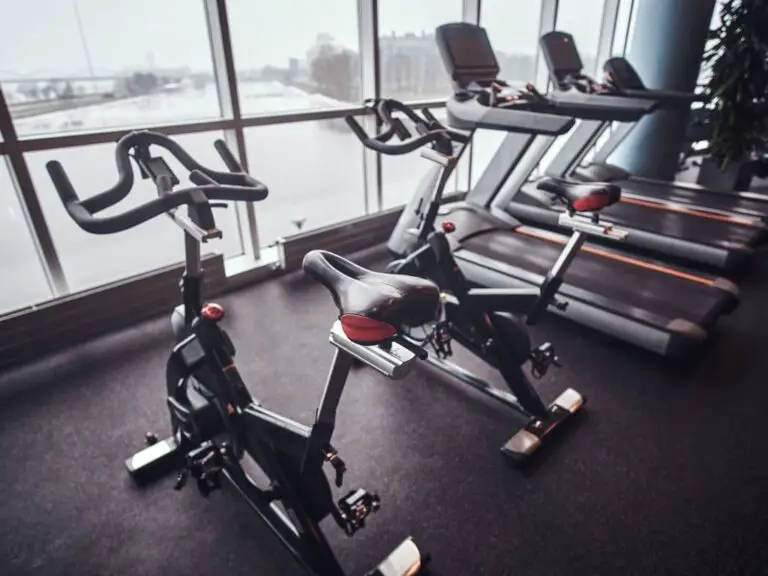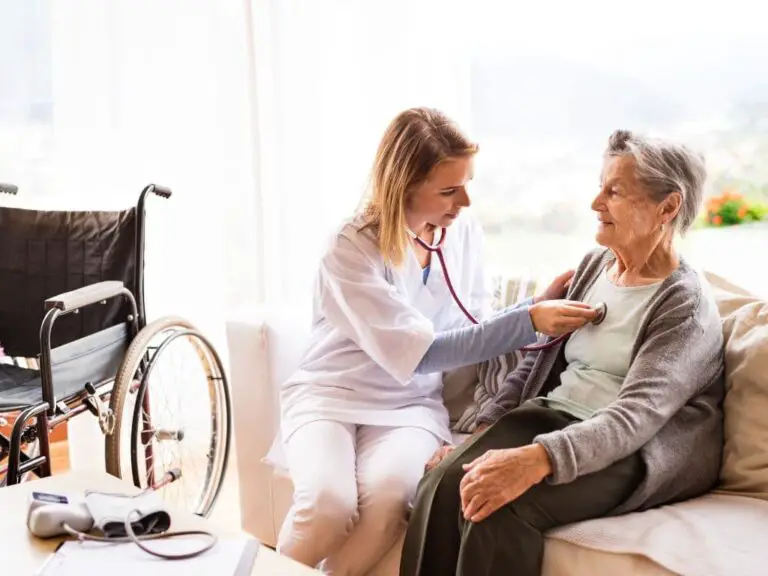Does Medicare Cover Medical Alert Systems?
Medical alert systems, also known as personal emergency response systems (PERS), are devices used to call for help in an emergency. They are crucial tools to ensure the safety and security of seniors and high-risk individuals, allowing them to maintain independence and quality of life. However, as useful as they are, medical alert systems can also be a significant financial burden.
A major question many seniors and caregivers have is: does Medicare cover the cost of medical alert systems?
No, Medicare does not cover the cost of medical alert systems under its Part A or Part B plans. These devices do not fit the criteria for durable medical equipment (DME). Some Medicare Advantage plans under Part C may offer limited coverage, but this varies greatly by provider and location.
Let’s explore this important issue and everything you need to know about choosing and using medical alert systems.

Does Medicare Cover Medical Alert Systems for Seniors?
Medicare is the federal health insurance program primarily for Americans over 65 and certain younger people with disabilities. The program has four parts — Part A, Part B, Part C, and Part D.
Part A helps cover inpatient hospital care along with skilled nursing, hospice, lab tests, surgery, and home health care. Part B helps pay for doctor visits and outpatient care. Part C offers alternate plans by private insurers. Part D helps cover prescription drug costs.
Unfortunately, original Medicare does not cover medical alert systems or PERS under Part A or Part B. These devices do not qualify under Medicare’s classification of durable medical equipment (DME).
DME refers to items like wheelchairs, walkers, hospital beds, oxygen equipment, etc. PERS devices are not considered essential for medical treatment, and so Medicare does not cover them.
Some Medicare Advantage plans under Part C may offer limited coverage for medical alert systems as part of added benefits. But coverage varies greatly between providers and geographic locations.
Overall, seniors cannot rely on Medicare to cover the cost of their medical alert systems. They need to find alternatives to finance this important safety equipment.
What are the Different Types of Medical Alert Systems Available for Seniors?
With Medicare not funding medical alert systems, what options are available for seniors? There are several types of PERS devices on the market today:
Exploring Durable Medical Equipment for Seniors
While PERS devices do not qualify under Medicare’s DME classification, DME does encompass some helpful safety equipment for seniors.
Items like walkers, wheelchairs, and hospital beds enable mobility and reduce fall risks. Other DME like oxygen tanks and CPAP machines support respiratory health. Such equipment promotes daily functioning and greater independence.
So DME can enhance seniors’ quality of life, even if PERS devices are not covered.
Personal Emergency Response System and Its Importance
The most basic medical alert systems are PERS devices. They consist of a small radio transmitter unit worn as a pendant or wristband.
In case of an emergency like a fall or health crisis, users press a help button. This automatically calls a 24/7 monitoring center. The monitoring service assesses the situation and dispatches emergency responders if needed.
PERS devices promote safety for seniors living independently. They provide immediate access to help and peace of mind for loved ones.
Medical Emergency Response System: How Does It Work?
MERS refers to medical emergency response systems with more advanced features. These may include:
- Automatic fall detection – Detects falls without requiring the user to press their help button.
- GPS tracking – Pinpoints the user’s location to direct emergency services.
- Health monitoring – Measures vitals like heart rate for early diagnosis.
- Activity tracking – Alerts caregivers about irregularities in daily movements.
Such features allow even greater monitoring of a senior’s safety and mobility. MERS provide added security for high-risk users.
Life Alert, Medical Guardian, Bay Alarm Medical, Philips Lifeline: Which is Better?
Well-known providers of medical alert systems include:
- Life Alert – Known for the “I’ve fallen and I can’t get up!” catchphrase. Provides classic PERS devices and MERS with fall detection.
- Medical Guardian – Offers home systems plus mobile PERS with GPS. Extra services like medication reminders available.
- Bay Alarm Medical – Includes fall detection and monthly wellness checks. No long-term contracts.
- Philips Lifeline – Leading home and mobile PERS provider with fall detection options. Backed by the Philips healthcare brand.
All offer reliable systems and monitoring. Choice comes down to extra features, costs, and customer service reputation.
Home vs Mobile Medical Alert Systems: What’s the Difference?
There are two main types when classifying PERS devices by portability:
- Home medical alert systems have a base station installed in the senior’s house and work within a certain radius. More affordable but limited mobility.
- Mobile medical alert systems use cellular connectivity so they work anywhere with cell service. Enable active seniors to get help on-the-go. Cost more monthly.
Seniors who are homebound may only require an in-home system. But mobile PERS allow greater flexibility to leave the house with safety.
Wearable Medical Alert Systems: Are They Worth It?
Wearable PERS devices are a recent innovation combining medical alert capabilities with smartwatch or activity tracker features:
- Fall detection responds to falls even without pressing the button.
- Heart rate monitoring oversees heart activity for early health alerts.
- GPS tracking pinpoints location if disoriented or lost.
- Step/activity tracking monitors changes in daily ambulation.
These provide comprehensive oversight of a senior’s safety and health. However, wearable systems are expensive. They are best for seniors at high fall risk or with extensive health issues requiring close monitoring.
For low to moderate needs, basic PERS devices are often sufficient and more affordable.
What are the Benefits of Using a Medical Alert System for Seniors?
Despite their costs, medical alert systems provide immense benefits for the wellbeing of senior citizens:
Safety and Security: How Can Medical Alert Systems Help?
The number one benefit of PERS devices is providing immediate access to emergency assistance 24/7. Help is only a button press away.
Rather than lying helpless after a debilitating fall or health event, seniors can quickly summon an ambulance through their medical alert system. This ability to call for aid any time of day or night, from home or while out, delivers great security.
Seniors feel more safe and confident living independently knowing support is there when they need it.
Independence and Quality of Life: Can Medical Alert Systems Improve Them?
Being able to continue living in their own homes as they age ranks high among seniors’ priorities. This ability to remain independent is key for quality of life.
However, as people grow older, health challenges like falls, chronic conditions, and memory issues make independent living risky. This often forces difficult choices about transitioning to supervised care facilities.
Medical alert systems allow seniors to enjoy independence and autonomy while still getting necessary care and oversight. These devices let seniors “age in place” safely and avoid or delay moving into assisted living. This ability improves seniors’ life satisfaction and emotional wellbeing.
Caregiving and Peace of Mind: How Do Medical Alert Systems Contribute?
The round-the-clock monitoring provided by medical alert systems also delivers peace of mind to family caregivers.
Knowing their elderly loved one has quick access to emergency response, even when home alone, relieves major worry. Caregivers can feel confident leaving for work or errands without heightened anxiety.
Medical alert systems also reduce demands on caregiver time and energy. Fewer hours need to be spent actively supervising the senior thanks to the monitoring support. This oversight assistance enables caregivers to focus on other important nurturing tasks for their loved one.
With PERS devices offering an added safety net, family members experience reduced caregiver stress.
How Much Does a Medical Alert System Cost?
Despite their benefits, a key downside of medical alert systems are their costs. There are several pricing factors to consider:
Understanding the Financial Burden of Medical Alert Systems
System purchase costs typically range from $20 – $1000 depending on features. Then there are significant ongoing monthly fees for the monitoring service. These average $25 – $50 but can exceed $100 for mobile systems.
Installation, activation, shipping, taxes, and other charges also add up. And fall detection or other extras cost more. Over time, these recurring costs become quite burdensome, especially on fixed incomes.
While critical for safety, medical alert systems place a major financial burdenon already vulnerable seniors. Creative solutions are needed to make this equipment affordable.
Cost of Different Types of Medical Alert Systems: A Comparative Analysis
Here is how costs shake out across the different types of systems:
- Basic in-home PERS have the lowest purchase and monitoring costs averaging $20 – $40 monthly. Limited mobility but great value.
- More advanced MERS devices carry higher monthly fees around $35 – $60 for extra capabilities like fall detection.
- Mobile PERS systems that work anywhere with cell service are the most costly with monthly monitoring of $50 – $100+.
- Wearable designs also sit at the higher end of the price spectrum due to their technology. Expect monthly costs between $40 – $75.
When selecting a medical alert device, weigh independence and health needs against the affordability. Cheaper is not always better if key features are missing. But overspending stretches limited budgets.
What are the Different Ways to Pay for a Medical Alert System?
With Medicare not able to foot the bill, how can seniors cover medical alert equipment costs? Here are some options to explore:
Insurance Coverage Options for Medical Alert Systems: What to Know?
Some other forms of insurance may offer some coverage:
- Long term care insurance may cover medical alert systems as part of home healthcare services. But policies have limits.
- Veterans Affairs provides some benefits for veterans to get medical alert systems.
- Certain Medicaid home care waivers include PERS devices if deemed medically necessary. Availability depends on each state’s coverage rules.
But since insurance support is very limited, seniors need other alternatives to fund their medical alert systems.
Other Ways to Cover the Cost of Medical Alert Systems
If insurance help falls short, other creative ideas include:
- Seeking financial assistance from relatives to split costs
- Tapping into retirement savings or 401k/IRA accounts
- Taking advantage of special discounts like through AARP membership
- Using crowdfunding sites to request donations
- Applying for grants or subsidies through non-profit Village to Village programs and State Associations of Area Agencies on Aging
- Considering cheaper systems like prepaid annual plans to reduce monthly costs
- Going for refurbished systems instead of brand new devices
With proper research, seniors can likely find ways to access affordable medical alert systems. But more support is needed to reduce the financial barriers facing seniors for this vital safety equipment.
What are the Different Features to Consider When Choosing a Medical Alert System for a Senior?
Selecting the right medical alert device involves assessing a senior’s unique needs and situation:
Fall Detection: Why is it Crucial in a Medical Alert System?
Seniors are prone to debilitating falls that leave them immobilized and unable to call for help. Fall detection uses automatic sensors that trigger alert systems if a fall is detected, without requiring the user to push their help button. This hands-free capability is essential for actually successfully getting help after a major fall.
Without it, seniors may lie on the floor for hours or even days before anyone knows. So if falls are a concern, choose equipment with reliable fall detection.
Heart Rate Monitoring and GPS Tracking: How Useful Are They?
These capabilities allow closer monitoring of a senior’s:
- Heart rate monitoring identifies cardiac irregularities and prevent health crises. Useful for users with chronic heart conditions.
- GPS tracking pinpoints location so help arrives promptly. Most beneficial for mobile users or those prone to wandering.
Assess how such features would concretely benefit your senior based on their health profile and needs before paying extra. Ensure added technologies are fully utilized.
How Do I Set Up a Medical Alert System for a Senior?
Once you select an appropriate medical alert device, proper setup is crucial for functionality and seamless use. Follow this step-by-step process:
- Choose a central location at home near where the senior spends most time to place the base system for reliable connectivity.
- Install the base station by plugging it into an electrical outlet and phone jack following device directions.
- Link the help button pendant/wristband with the base station according to manufacturer instructions. Test the connectivity.
- Program emergency contacts into the system that will be called first when the help button is pressed. Include relatives, neighbors, caregivers.
- Add assistive information such as medical conditions, allergies, and medications for monitoring center reference during emergencies.
- Register the equipment to activate monitoring services. Provide necessary payment details.
- Train the senior thoroughly on how to use the medical alert device in case of emergencies. Have them practice pressing the help button.
With proper setup and education, medical alert systems become simple for seniors to use and maximize their benefits.
How Do I Use a Medical Alert System?
Using a medical alert system effectively takes just a few easy steps:
For emergencies:
- Press the help button on the pendant if injured, feeling unwell, threatened, or any emergency.
- The device automatically calls the 24/7 monitoring center. Speak clearly about what is happening and that you need assistance.
- The monitoring agent assesses the situation, speaks with you to gain details, contacts emergency responders if needed, and stays on the line until help arrives.
For non-emergencies:
- Press the help button or call the center directly. Explain the non-urgent issue like a reminder or wellness check-in.
- The agent will assist with reminders, notifications, keeping social contact, and addressing minor issues.
Remember to wear or carry the help button pendant at all times to have access to emergency support whenever needed. Also consider enrolling in optional monitoring center features like daily check-in calls or automated medication reminders for additional assistance.
What are the Common Problems with Medical Alert Systems?
While invaluable for safety, medical alert systems can experience some technical difficulties:
- Weak cellular signal causing dropped connections to the monitoring center.
- Faulty fall detection with inaccurate alerts.
- Lagging GPS tracking failing to pinpoint location.
- Help button not working when pressed. This critical failure requires immediate attention.
- Malfunctioning base station or pendant.
- Battery dying without warning.
To avoid crises, test devices regularly and troubleshoot problems promptly. Notify the provider for repair or replacement assistance as issues arise.
How Do I Troubleshoot Problems with a Medical Alert System?
Follow these troubleshooting tips if your medical alert system acts up:
For connectivity issues:
- Check that all equipment is plugged in and charged up. Replace batteries if low.
- Ensure sufficient cellular signal for mobile units or WiFi connectivity for in-home systems. Move base station or pendant and test again.
- Press the test/status button on the base station to confirm it is functioning properly. Reboot if unresponsive.
- Call the monitoring center to test system end-to-end. Notify them if you experience breakdowns.
For faulty devices:
- Inspect the help button pendant and base unit for any damage or missing lights/indicators.
- Clean battery contacts and reconnect to refresh the connection.
- Press the help pendant multiple times from various locations to check for inconsistent performance.
- For repeated problems, request replacement parts from the provider.Address any usage uncertainties or difficulties promptly before serious breakdowns occur. Know the basics of your system’s operations and maintenance needs.
Conclusion
Medical alert systems are vital safety equipment for seniors to get quick emergency assistance. But steep costs can deter adoption. While Medicare does not cover these devices, resources exist to make them affordable. Compare available systems and financing options carefully. Optimize life-saving technologies by learning how to properly use and troubleshoot them. With smart choices, medical alert systems provide seniors invaluable protection, independence and peace of mind.
Frequently Asked Questions
-
Does Medicare pay for med alert?
Medicare does not cover medical alert systems. However, there are ways you can reduce or even eliminate this cost.
-
Can Life Alert be worn in the shower?
Life Alert can I be used in the shower with? Life Alert’s waterproof pendant, button and GPS devices are water-resistant. You can also call Life Alert from any location using two-way communication.
-
What medical Alert systems does AARP recommend?
Connect America acquired Lifeline Lifeline, a provider of emergency medical alert systems. Lifeline has been recommended by AARP and is also recommended by hospitals more than any other company offering medical alert systems.
-
Does AARP United Healthcare cover medical alert systems?
With an AARP/UnitedHealthcare Medicare Advantage plan, most enrollees can get a free medical alert system through Philips Lifeline. AARP/UnitedHealthcare offers the best coverage available because the free alert systems are available to most policyholders, without restrictions.
-
Do you need Internet for Life Alert?
Is Life Alert dependent on Wifi? Life Alert coverage is available in all areas of your house without the need for wifi. You can access the Life Alert In Home medical alert system as long you have a phone line.
-
Does AARP supplement cover medical alert systems?
The American Association of Retired Persons does not provide coverage for medical alert system. Philips Lifeline is an affiliation of AARP, which provides discounts for AARP members.
-
What is better than Life Alert?
Bay Alarm Medical Guardian, MobileHelp or Aloe Care Health might be better options if you are looking for an alert system that detects falls and has modern technology.
-
Can Life Alert detect a fall?
Maximum 800 feet Every second matters in an emergency. Sometimes your phone is out of reach, or worse, it may not be able to contact you. Fall detection systems in medical alerts automatically detect and notify emergency monitor centers.
-
Do you need WIFI for medical alert systems?
There is no Wi-Fi required. The Alert1 medical alarm systems don’t require Wi-Fi to be used. Some households may not have access to wireless internet. We solved the problem by developing mobile help buttons which use GPS or cell towers instead.
-
What is the difference between Life Alert and medical alert?
Medical Alert does not require long-term commitments or contracts. This is another important difference between the two systems. Life Alert subscribers must sign a 3-year contract and can cancel only under certain conditions.






